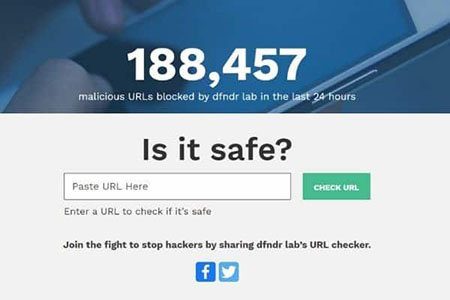It is often beneficial to be cautious. However, before interacting with a website or entering personal information, it is crucial to use a URL checker or verify its reputation. If you want to protect yourself from phishing and viruses, you must undoubtedly rely on URL-checking tools to inspect a site for any malicious infection. Is there anything suspicious about that streaming site? Need to shop online but want to make sure the eCommerce store is legitimate before entering your credit card information? Website verification is required for any online activity. In this post, we will discuss what a URL checker is, how it works, and how to safely check a link with the help of an URL checker.
What is a link or an URL checker?
A link or URL checker is an online service or software tool that checks or verifies broken hyperlinks on a website or Web page. It enables website administrators to detect malicious URLs such as malware, scam, and phishing links. URL checker enables scanning of URLs for malware, viruses, scam, and phishing links using a safe link checker to safeguard personal information saved on a device. A website checker determines whether a website is legitimate, phishing, or a scam

Types of Link/URL checker
URL checkers' role is to automatically detect and display any existing links. There are various types of URL checkers, each of which can perform the following functions:
- Broken link checker
- Backlink checker
- Link checker for outbound and inbound links
- Link checker for add-ons
- Anchor text finder
It is always recommended to use multiple URL checkers to check links because one tool does not always find all of the links.
How does an a link or URL Checker work?
The URL Checker runs through all of the account's ads, keywords, and site links. It determines whether the landing pages produce "Page not found" or other types of responses. If it finds such errors, it will notify you by sending an email with a detailed description of where the error occurred. It saves all of its analysis results in a spreadsheet.
It's worth noting that some accounts have a large number of URLs that can't be checked in 'the same run' (due to execution time limits or quotas). The script circumvents this by monitoring its progress over multiple runs and only checking URLs that it has not previously checked.
How to check a Link Safely?
The steps to check an URL safely with an URL Checker are as follows:Check The Domain Name Carefully
As a first step, carefully examine the domain name in the link. A changed spelling of a domain name is almost always a sign of a scam attempt. Phishers, for example, may use http://www.1egitimatebank.com instead of http://www.legitimatebank.com. The first one substitutes the number 1 for the letter l. If you don't look closely, you might miss it. Another common trick for an URL Checker is to replace the letter O with the number 0 (zero).
Get in The Habit of Hovering!
Have you ever noticed this useful function when resting the cursor on specific items? Make a habit of hovering your mouse cursor over the link before clicking on it. This will display the address that the link represents. If you have any doubts about a link, use a URL Checker search engine to find the organization's URL address rather than using the link provided in the email.
HTTPS Is Always Better Than HTTP

Another way to ensure link safety is to ensure that any site that requires you to enter financial information uses https rather than HTTP. Secure sites, like online banking or e-commerce platforms, will always use the more secure version of the http protocol, known as https. This URL Checker website ensures that your data is securely transmitted over the Internet to the website. https:// will be displayed in the browser's URL address field, along with a security padlock icon. When you double-click on the padlock sign, the website's security certificate should be displayed.
But HTTPS Can Also Be Fake!
The fact that a website uses https:// and displays the padlock icon does not always mean that it is authentic. It's still possible, though less likely that it's a spoof. If the security certificate is not displayed, or if you get a message saying that the URL address of the site does not match the certificate or that the certificate can not seem to be trusted, it is most likely a spoof with someone attempting to obtain your private credentials. Even if the site is https, you should double-check the website address in your browser's URL address field. If the address seems to be unusual, don't proceed until you've confirmed or get it verified with the company or organization.
Protect your website with the best web security by Comodo, a reliable URL Checker website. The URL Checker Website Security includes malware removal, site monitoring and protection, and a complete production suite. You can check your URL/website with cWatch Online Website Scanner for free! To get more information about URL checker, visit for the website.





